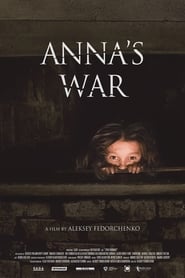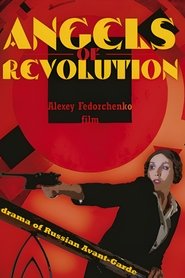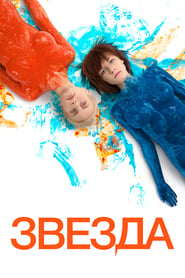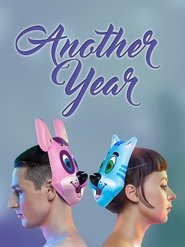detail profile olga gileva
Peran Yang Di Mainkan Olga Gileva
 The entire family of a 6yearold...
The entire family of a 6yearold...Anna's War 2018
The entire family of a 6-year-old Anna dies in the mass coordinated execution of Jews. The mother covers up Anna with her own body, and the girl miraculously survives. For the next few hundred days Anna hides in the disused chimney at the Nazi Commandant's office. From her shelter she watches as life passes her by until the village is liberated from the Nazi. In these inhuman conditions Anna not only survives but keeps her humanity. Many factors help her: memories from the life swept away by war, the cultural foundations laid by the parents and a friend who saves her from loneliness.
 What is love The heroes of...
What is love The heroes of...About Love 2015
What is love? The heroes of the film try to answer this question. A series of the most different characters and their stories are woven together. Small stories about various things, all about love: a young pair who prefer to live through images of Japanese anime-heroes; a secretary who receives an obscene offer from her boss; a Japanese woman who arrives in Moscow in search of a Russian man; a graffiti artist in search of beauty; an ex-wife employed by her husband for an unusual task; and many other things...
 Five friends a poet an actor...
Five friends a poet an actor...Angels of Revolution 2014
Five friends – a poet, an actor, a painter, an architect and a primitivist film director – are five red avant-garde artists who try to find the embodiment of their hopes and dreams in the young Soviet state. The Revolution is boiling up like a bottle with apple cider: winged service dogs and heart-shaped potatoes, dead Semashko, the People’s Commissar for Health, and cheerful angels, love for the Tsar and love for the young secretary Annushka, executions and pregnancies – everything is interlaced and inseparable!
 Three different persons three different lives...
Three different persons three different lives...Star 2014
Three different persons, three different lives are connected in a mysterious way. 15 year old teenager suffering of misunderstanding, his glamorous and arrogant stepmother and the young untalented but full of optimism actress. Their destinies aren’t predetermined and their lives are very fragile.
 Hes an unemployed guy who earns...
Hes an unemployed guy who earns...Another Year 2014
He's an unemployed guy who earns some money by giving lifts to strangers. She's a graphic designer who just got her first job. The film tracks their relationship - and the way it gradually melts away - throughout a year. A subtle, moving portrait of an immature love that breaks down easily.
 This is a collection of portraits 23...
This is a collection of portraits 23...Celestial Wives of the Meadow Mari 2012
This is a collection of portraits: 23 short stories about the Mari women, a sort of Decameron suspended between magic and realism, in which the Autonomous Republic of the Marij El serves as a backdrop for the collective history of a people of ancient tradition. A journey into a mysterious and unknown part of the world.
 In the second feature film by...
In the second feature film by...Living 2012
In the second feature film by Russian director Vasily Sigarev, fate brings ordeals to characters that find themselves immersed in deep crisis; they must seek the strength to cope with adversity. In a remote and cold region of Russia, Galya, a middle-aged woman with a drinking problem, has been separated from her twin daughters and she wants them back. On the other hand, Grishka and Anton are a young couple who decide to get married, but right after the wedding their relationship is put to the test in a brutal way. While Artyom longs to see his missing father, but his mother objects. There is only one element that brings all of these characters together: misfortune.
 Miron Alekseevich director of a paper...
Miron Alekseevich director of a paper...Silent Souls 2010
Miron Alekseevich, director of a paper and pulp mill, goes to bury his wife Tanya in the place where they once spent their honeymoon. He goes not alone, but with a photographer named Stork, to whom he tells touching details of his life with Tanya. The narrative weaves together the memories of the characters, as well as the rituals and beliefs of the Meri people, a small Finnish tribe that once lived in the Northern Volga region and dissolved among the Russians.

 1993 the story of one family suddenly...
1993 the story of one family suddenly...